|
BE VERY CAUTIOUS GATHERING WILD PLANTS -- ESPECIALLY THOSE THAT LOOK LIKE THEY ARE FROM THE CARROT FAMILY -- SOME ARE DEADLY Queen Anne's Lace is delicate and lovely, and one can imagine that Queen Anne might have carefully crafted the flowerhead from thread with the intention of creating a decorative doily. In fact, the story goes that the single dark reddish flower often found right in the center of a white QAL flower is a single drop of blood from where Queen Anne pricked her finger while making the lace. This beautiful wildflower is wild carrot, Daucus carota, the mother of the sweet orange root vegetable everyone knows. I don't recommend trying to wildcraft the root, though. This is a biennial, which means she only lives two years, and the second year is the year she sends up a stalk and flowers. By that time, the root is pithy. The more edible roots are those of the first year plant, but because she doesn't have the telltale signs for positive identification the first year (the tall flower stalk, the hairy stems, etc.), please don't do anything so foolhardy as to wildcraft first year wild carrots. There are several carrot family member plants that are poisonous, and some are DEADLY. The tiny little roots of QAL are not worth risking death. Instead, eat the flowers and leaves, which have a delicate carrot flavor. The leaves, flowers and seeds of QAL have a long history of use as herbal medicine, treating digestive disorders as well as liver, kidney and bladder issues. The seeds have been used as a natural birth control and to terminate pregnancy, so don't ingest the seeds while pregnant or attempting to conceive. Our favorite uses for Queen Anne's Lace is to add the flowers to salads, cut flowers for the table, and make delicious Queen Anne's Lace Jelly (recipe below). If you have QAL growing in your yard, you will want to be sure to remove the seed heads when they form, or she will take over your yard. QAL is invasive and can displace native species, which we don't want. Did you know that carrot seed essential oil is made from QAL? :) QUEEN ANNE’S LACE JELLY Has a delicious light floral taste. (from the book Gatherings from the Good Earth by Twila Fairbanks) Note: First identify Queen Anne’s Lace correctly. I normally collect by the end of June in my area. Read all instructions first before gathering the blooms to make the jelly so all supplies are on hand. To make infusion for jelly: 2 packed cups of heads (approximately 20 heads of fresh blooms, not older blooms) 4 c. almost boiling water I use a half gallon jar for the heads and pour the hot water over, punching down and stirring with a wood spoon. Cover with lid. Let set to steep and cool down 4 hours. Strain two times with super fine small strainer and cotton cloth, being careful not to disrupt the sediment (dirt etc.) in bottom of jar. Leave behind about 1/4 c. of sediment if present. Toss the wilted heads in compost. Have 6 - 4 oz. jelly jars with 2- piece lids sterilized and ready or 8 -2 oz. Jars, which are a smaller size and great for giving away. Set jars on a cookie sheet with sides lined with clean towel. To make jelly: 3 cups strained infusion 2 T. lemon juice (from a fresh lemon – not bottled) 1 pkg. Sure Jell powdered fruit pectin Put all in a large stainless steel pan, stir and bring to a rolling boil. Add 4 c. sugar and boil 1 minute longer. Remove from heat. If any foam on top, skim off with large metal spoon. Ladle into jars. Wipe rims of jars and put lids on and screw down tightly. Use hot water bath (covering jars with water and lid) for 10 minutes. Remove jars carefully and let rest 24 hours. (Twila & grandson making it several years ago) Use CAUTION! Do not eat/use a wild plant unless you have 100% certainty it has been identified correctly. If you have a health condition, are taking pharma meds, or are pregnant/breastfeeding, be sure to research contraindications. The seeds of Queen Anne's Lace can affect hormones and have been used as a natural birth control method, as well as a way to terminate pregnancies.
Disclaimer: Every body is different, and any plant can cause an unpleasant reaction depending on the person. Start small and listen to your body – it is the ULTIMATE AUTHORITY. This information has been compiled from reputable herbalists and natural care professionals. It is intended for educational purposes only. These statements have not been evaluated by the FDA.This information is not intended as medical advice, nor is it intended to prevent, diagnose, treat, or cure any disease. Seek professional medical care for health concerns.
0 Comments
After a rainy night, I look out my east kitchen sink window and see the sun highlighting webs – woven silky spider webs. There are layers of webs between the porch and beyond the garden. I count 4 rows of big, sparkling webs. Each web is picture pretty – in fact stunning, when one realizes a very small creature made it. The dew is glistening on the silken threads, and each web is different – yet a bit the same. I stand with a cup of hot herbal tea in hand and study the webs. I want to take a picture of each one, but I know the camera will not do them justice. How does one capture the beauty of this surreal moment? The geometric patterns are fascinating, and I am enthralled by the “zipper” in a few of the webs. It is late summer and autumn is on my mind. The spiders know it too, spinning their webs, catching the silky threads on a branch and down to a grass blade and up again and back and forth. I know these fat spiders that live on the edge of my woods. I have run into them, literally, not seeing their web in front of me. At a certain angle of light, the web can be seen clearly and beautifully and then, with a change of light, it is hidden from human sight, unless an insect is snared in it or we happen to meet up with it unexpectedly. I am reminded of the following quote: A spiderweb is a thing you walk into which suddenly turns you into a karate master. –unknown The silken threads are all over me, and the spider retreated knowing the threat I perhaps represent, but my mind has not caught up with the reality. My arms flail every which direction trying to get the sticky web off me, to no avail. I am not that afraid of spiders, but I don’t want to feel a big fat one crawling over me. But again, if it did, I would probably just say “Hello, and I’m sorry for ruining your web” and then take a stick to help it off me and back into the bushes to make another web, another night. During the summer, I see spiders now and then, but this time of year, I see them every day – hanging out in their webs or on the edge waiting for their next meal. The webs are truly a work of art and I admire each and every one of them. Oh, the work and know-how or instinct it takes to make a web! The greatest artist and web-designer ever is indeed a spider. – Munia Khan To answer some of the questions going around in my “inquiring mind,” I researched and found these tidbits of information worth knowing: - Spiders are NOT insects, but they catch and eat insects – they are arachnids. - Spiders are the leading predators of insects. They keep the insect species in check which helps keep civilization alive. We should thank the spiders - not be terrified of them. - There are about 45,000 named species, & that could be as little as 10% of what’s really out there. - Grand-daddy long legs are not spiders. - About half of all spiders make webs, mainly females, to forage for prey. - Webs are spun of spider silk. The two universal uses of the silk thread are the drag line for descending quickly and for making an egg sac. They always have a thread behind them, wherever they go. A poem is a spider web Spun with words of wonder, Woven lace held in place By whispers made of thunder. - Charles Ghigna Last week, as I walked in my long lane, I stopped to admire the new blooms of the goldenrod. On the pretty yellow flower- I found a pretty yellow crab spider – she matched the flower perfectly in color. The crab spider catches her prey without a web. This is a different species of spider also known as flower spider. These spiders can camouflage to match the flower such as the goldenrod. The fascinating intricacies and miracles of nature – all from a spider.
On your next walk, I hope you will watch and come across the intricate silky and beautiful spider web. Note: It is September, and time to read the next chapter in your copy of Gatherings of the Good Earth. I hope you have been following along, reading month by month as we go through the year -- and journaling your own reflections and thoughts. Signed copies of the book are available at the shop (and make great gifts). Twila Resources: Rod Crawford of The Burke Museum Arachnid Collection and The Golden Nature Guide Series, Spiders and their Kin 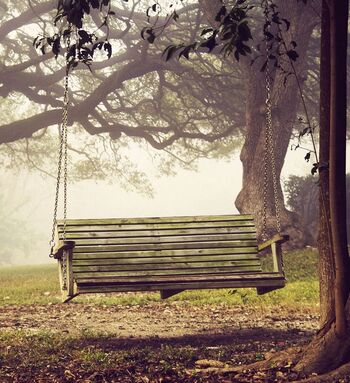 Summer is officially here - as if we needed reminders. We feel the heat and humidity, along with mosquitoes and chiggers biting. We are picking the fresh produce from the gardens and gathering flowers for the table and watching fireflies in the evening darkness. Yes, it is summer, a time when the living is supposed to be easy - a time for families going on vacation, kids out of school, and groups taking time out until fall to meet again. There is something to be said about "slow living" in the summer. We tend to move at a slower pace. Food is cooked outside on the grill now and the oven doesn't run as much. The emphasis is on cold food like melon, sandwiches, tomatoes and salads instead of the winter fare of hot soups and heavy casseroles. Many will argue we work just as hard in the summer, and for many that is true. Hopefully, weekends are for "slow living" when families come together and make memories. "Slow living" is definitely something I do, and I don't feel guilty on a hot and humid day when I stay inside with the coolness of the air conditioner and pick up a book to read or find a project to do. With my list of chores done for the day it is time to "play" with slow living - it is part of enjoying the fullness of the season at hand. My enjoyment of the season includes drying herbs, and my table and counters are full of herbs drying. The house smells quite "herby," which is delightful. My garden tea is made, and I enjoy a hot cup each morning to get the day started - it is a morning ritual (now available in the shop - has lavender and elderflower in it - yummy!). And with lunch I enjoy the fresh lemon balm/spearmint infusion (tea) over ice – this is my beverage of choice the rest of the day and evening. The garden has been flourishing and supplying lettuce, onion, garlic, chard and green beans as regulars on my plate. Now the tomatoes, cucumbers and zucchini are ready to give of their bounty, as well as the blackberries turning color and elderberries setting on. I am humbled by what I am able to grow myself organically with the rewards of knowing where it came from. I hope to do so as long as I possibly can. I am reminded of Mary Oliver's poem, "The Summer Day.” Her writings resonate with me. I hope you can enjoy "slow living" this summer, and find purpose in the season from whatever you choose to do. Twila The Summer Day
Who made the world? Who made the swan, and the black bear? Who made the grasshopper? This grasshopper, I mean- the one who has flung herself out of the grass, the one who is eating sugar out of my hand, who is moving her jaws back and forth instead of up and down- who is gazing around with her enormous and complicated eyes. Now she lifts her pale forearms and thoroughly washes her face. Now she snaps her wings open, and floats away. I don't know exactly what a prayer is. I do know how to pay attention, how to fall down into the grass, how to kneel down in the grass, how to be idle and blessed, how to stroll through the fields, which is what I have been doing all day. Tell me, what else should I have done? Doesn't everything die at last, and too soon? Tell me, what is it you plan to do with your one wild and precious life? —Mary Oliver |
About UsWe are a Mother-Daughter Team passionate about connecting people with Mother Earth, Ancestral wisdom, and other kindred spirits. Archives
June 2020
Categories |
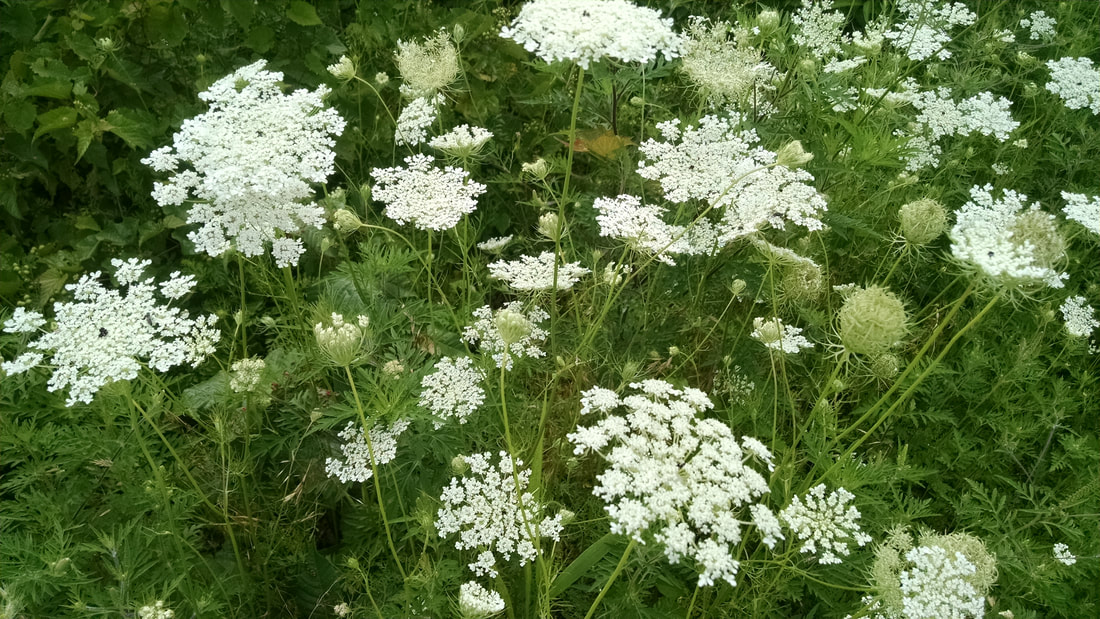
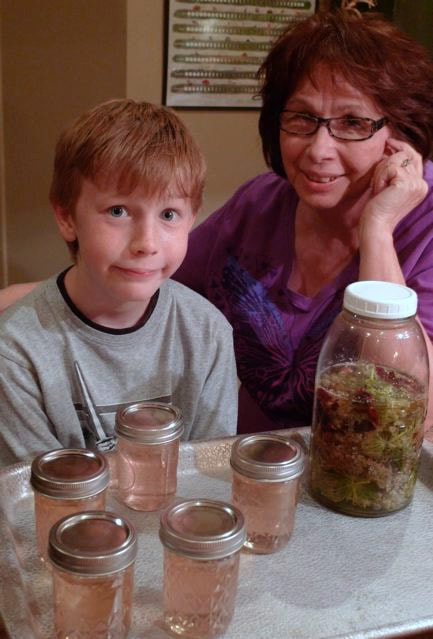
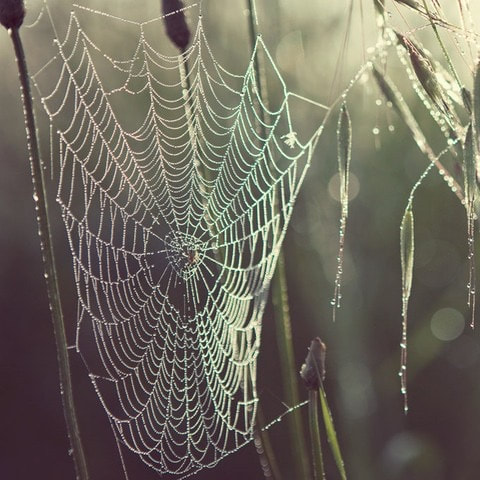
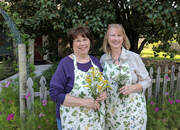
 RSS Feed
RSS Feed